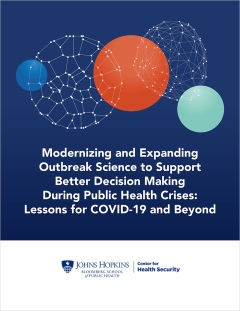Clade X was a day-long pandemic tabletop exercise conducted by the Johns Hopkins Center for Health Security on May 15, 2018, in Washington, DC. In this report, we briefly describe the exercise development process and focus principally on the findings and recommendations that arose from this project.
Clade X was a day-long pandemic tabletop exercise conducted by the Johns Hopkins Center for Health Security on May 15, 2018, in Washington, DC. Many details of the exercise are available online, including videos, background documents, and fact sheets.In this report, we briefly describe the exercise development process and focus principally on the findings and recommendations that arose from this project.


